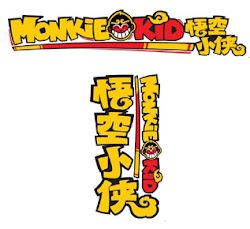In what may be one of the biggest wastes of time in the history of trademark jurisprudence, the Board reversed the USPTO's requirements that LEGO disclaim the word KID, in both Latin and non-Latin characters, in the two marks shown below, for various goods and services primarily aimed at children. The Board found the two marks to be unitary, and therefore disclaimer of KID was not required. Now, does anyone think that Lego, by avoiding these disclaimers, will be able to stop others from using the word KID in connection with child-related goods and services? What's the point? In re Lego Juris A/S, Serial Nos. 88698784 and 88698804 (May 9, 2022) [not precedential (Opinion by Judge Cynthia C. Lynch).

The Board observed that a composite mark is unitary if the elements of the mark "are so merged together that they cannot be viewed as separable elements, . . . rendering a disclaimer unnecessary." In re EBS Data Processing, Inc., 212 USPQ 964, 966 (TTAB 1981).
Several factors inform the unitariness analysis: the physical connection of the potentially unregistrable component to other elements of the proposed mark by lines or other design features; the relative location of the respective elements of the proposed mark; and the significance of the terminology as used on or in connection with the goods or services. Dena v. Belvedere, 21 USPQ2d at 1052; see also TRADEMARK MANUAL OF EXAMINING PROCEDURE (TMEP) § 1213.05 (July 2021).
The Board found that, in each mark, the elements "merge together in a way that conveys a unitary impression." It perceptively noted that the words MONKIE and KID are physically connected to the design of a monkey's head. The Board was unmoved by the examining attorney's argument that the monkey head "functions as a space" that separates those two words.
Connecting elements with a design feature tends to show unitariness. Dena v. Belvedere, 21 USPQ2d at 1052. This conclusion is bolstered by the curled tail over the letter I in KID, which gives the sense that the monkey's body is hidden behind the word KID, with the tail peeking over the top. A similar tail design also appears at the bottom right, connected to the Chinese lettering joined to the edge of the D in the word KID and to the edge of the underlining beneath MONKIE KID and the monkey head design.
What about the fact that the words MONKIE and KID are in different colors? Again, the Board was unimpressed: "The monkey head design incorporates both red and yellow, and this color scheme, like the design itself and its placement, serves to bring the words MONKIE and KID together, reinforced by the underlining of both words and the design in alternating red and yellow. We find the elements of the mark as a whole are 'so merged together that they cannot be regarded as separate.' Dena v. Belvedere, 21 USPQ2d at 1052."
The Board concluded that the monkey-related design elements and the connection of the various features "give the impression of a 'monkey kid' creature." Consumers are likely to understand KID, and its foreign equivalent, to refer to that MONKIE KID creature. In short, "a registrable term and an unregistrable term are joined together [with design elements] so as to form a mark which has a distinct non-descriptive meaning of its own ...." In re Kraft, Inc., 218 USPQ 571, 573 (TTAB 1983).
And so, the Board reversed the refusals to register.
Read comments and post your comment here.
TTABlogger comment: Why precedential? What's new here? FWIW, I think the use of red for the word KID makes it stand out with a separate commercial impression.
The content of this article is intended to provide a general guide to the subject matter. Specialist advice should be sought about your specific circumstances.

